The Mk1 Audi TT is airy, artsy, and impressively affordable
To recognize 25 years of the Audi TT and commemorate its final year in production, we bring you this light history, drive experience, and market analysis of the Mk1 TT. Come back tomorrow for a deep dive on the car’s design, as well as a road test of the final, 2023 TTS publishing September 14, 2023. -Ed.
Rare is the concept car that makes it to production intact. The 1999 Audi TT was one such design, launching three years after the gorgeous TT concept dropped every jaw in the hall at the 1995 Frankfurt IAA show. Whether in coupe or roadster form (the latter arriving for 2000), this particular Audi’s strength has always been its styling. It was soft yet edgy, cute yet sophisticated. The car still turns heads today, and with driver-quality examples costing under $10,000, the TT is one of the best-looking little sports cars for a budget.
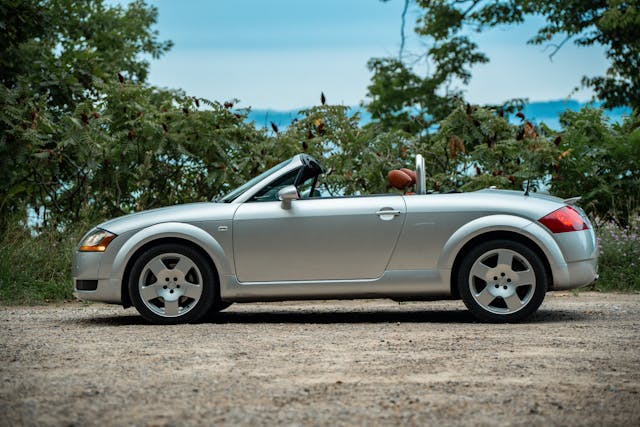
Truly, it’s difficult to overstate the halo effect the TT concept had on the entire Audi brand when it debuted in Frankfurt. At that point, Audi’s lineup consisted of the 100, the 90, and the V8—staid, boxy sedans for Europe’s sober upper-middle management set. Inspired by the smoothness of Bauhaus architecture, designer Freeman Thomas’ show car was sensationally curvy and shapely, but also simple, so comprehensible. The interior was handsome, ergonomically considered, and full of little design delights. The car signaled a shift at Audi, and this invigorated design ethos helped drive the success of the era-defining Audi A3 and A4 in the years that followed.
Displacing just 1.8 liters, Audi’s four-cylinder engine was turbocharged to 180 hp in base form, paired with a five-speed manual gearbox and an optional Haldex all-wheel-drive system (branded as Quattro). Ticking the box for the 225-hp version of this same engine yielded a six-speed manual transmission, as well as standard Quattro.
Though named after the historic Tourist Trophy race on the Isle of Man, the TT was much more of a looker than a cooker. The Mk I model was built on front-wheel-drive Volkswagen bones, sharing its platform with the Golf, Jetta, and New Beetle. Its transverse-engine, front-heavy design put the TT at a dynamic disadvantage compared with rear-drive sports cars like the BMW Z3, Honda S2000, and mid-engine Porsche Boxster. In a 2000 group comparison test, Car and Driver’s Csaba Csere summed it up: “By itself, the TT seems fine,” he wrote. “But in this company, its road manners leave much to be desired.”
Further complicating matters were a handful of high-speed TT accidents on the autobahn that prompted Audi to disturb that perfectly formed booty with a spoiler to increase downforce and stability on the rear axle. The suspension was also largely revised, which combined with updated software for electronic stability control to put the handling issues to bed. Prior examples were recalled and retrofitted with the changes.
Priced right on top of the Z3, the base TT roadster cost about $34,000, or $40K for the 225-hp Quattro version. That made it nearly $10K cheaper than the Boxster or the Mercedes-Benz SLK, but the TT was nonetheless considerably nicer to ride in than either. “Compared with the TT’s interior,” Csere reflected, “[the Boxster] looks as plain as a taxicab.”
The cabin really is a work of art. I borrowed this manual-equipped, 225-hp 2001 TT from Hagerty executive Doug Clark and loved spending time in it so much that he almost didn’t get it back. His particular example is fitted with a deeply distinctive baseball-glove leather interior, complete with laces through the seams of the seats. Now more than two decades old, the twin buckets have aged beautifully, like—as you might expect—a well-worn and well-oiled mitt.
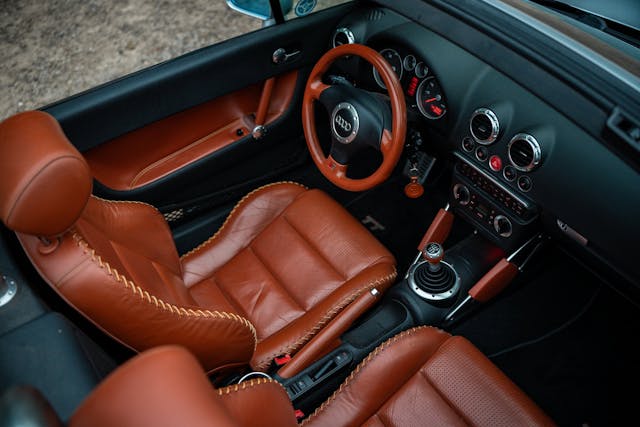

Leather aside, it’s the unified art deco feel of this interior that most impresses. Credited to designer Romulus Rost, it offers a view from the driver’s seat that is downright pleasing. Maybe it’s the ubiquitous circles—circles for the knobs, switches, gauges, and much more—that are so easy on the eyes. In key places these circles are tastefully accented with dimpled bezels, as on the steering wheel, HVAC vents, fuel filler door, shift knob, and even in hidden places such as the base of the roll hoops. Because you sit low in the TT and the top of the doors are relatively high, the cabin feels all-encompassing, even with the top down. That would be a bad thing in any other roadster.
I’ve written on this site several times about my personal BMW Z3, which after a day in Doug’s TT feels like the dark purples in Monopoly. It’s not that the TT is Park Place, but for the same money when new it provides a much friendlier space. The TT feels wider, for one, and the material quality is noticeably better. The convertible top closes with a couple twists of a hefty-feeling handle, and the rear window is made of heated glass instead of my Z3’s plastic. The Audi is just classy.
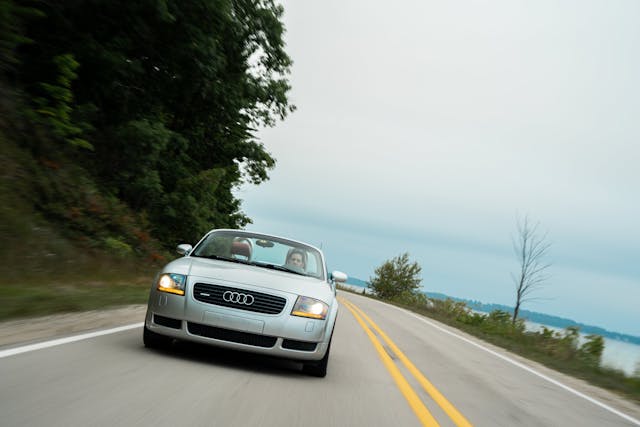
At the same time, it isn’t quite as much fun to drive. The TT feels most at home when making quick directional changes, such as squirting through slower-moving traffic or negotiating a friendly back road. When you really start pushing it through gnarlier stuff, however, you realize there isn’t a deeper layer of communication or entertainment buried in the chassis, waiting to be revealed. Past a certain point, it’s all understeer, albeit well-managed on corner exit with a boot of the gas pedal. In this respect the TT is very unlike the Porsche Boxster, whose subtle handling nuances provide substantial education and entertainment.
Turbo lag is a given when dealing with a small, boosted engine dating back to the Clinton administration, but here it doesn’t diminish what is otherwise a perfectly friendly four-cylinder. The trick is just to keep the revs right in the middle. In the 2500–5000 range, there’s plenty of usable torque on demand, even in higher gears, and each roll on the throttle evinces a sweet-sounding turbine whistle. That’s about all the aural feedback there is to savor, because the twin exhausts sound rather demure, even with the top down.
For Doug’s part, he drives this TT almost every day in spring and summer as a second car in his household. “I don’t look for it to carry much or be the most practical car ever. I just love the manual and use it with the top down every day I can,” he says.
Given the TT’s combination of around-town drivability and interior comfort, it perhaps does not come as a shock that older demographics favor it. Baby boomers (39.4 percent) and Gen X (31.7 percent) overwhelmingly dominate the Hagerty insurance quote pool for the TT, with Gen Z representing just 4.8 percent of quotes.
Ultimate performance is often a driver of popularity, and thus, a driver of pricing for collector cars, which is one explanation for why the TT’s softer personality hasn’t yet translated to big bucks. The best examples in the world (#1-condition, Concours) of the highest-value variant—late-model coupes with VW’s 3.2-liter VR6 engine—command $35,200. Pristine BMW M Coupes go for more than twice that, M Roadsters inhabit the low-$60,000s at the very top end, and Honda S2000s even in #2 (Excellent) condition average over $40,000.
Driver-condition TTs (#3, Good) come in at about 9 grand, up about $2000 since early 2021, when the TT appeared on our annual Bull Market list. (Coupes go for a bit more than roadsters, as do manuals and cars with the baseball-glove interior.) While #2 and #1 examples are climbing faster than #3s and #4s, there’s no reason to believe the average TT will march out of reach for mortals any time soon. These may well be fun, fashionable, affordable little machines for the foreseeable future.
Part of Doug’s passion for the TT is that he worked at Audi in public relations and helped launch the car in the U.S. market. “I am biased, of course,” he says, “but even trying to put all of that aside I think the design is fantastic. Both modern and like a storied car from the past—it just makes me smile.”
He’s onto something there. The TT has aged more gracefully than perhaps any of its competitors, and even 25 years later the car looks fresh. It might not go down as one of history’s greatest sports cars, but it may well be remembered as one of the most important sports car designs of its era. At under five figures, it’s a Bauhaus bargain.
***
Check out the Hagerty Media homepage so you don’t miss a single story, or better yet, bookmark it. To get our best stories delivered right to your inbox, subscribe to our newsletters.
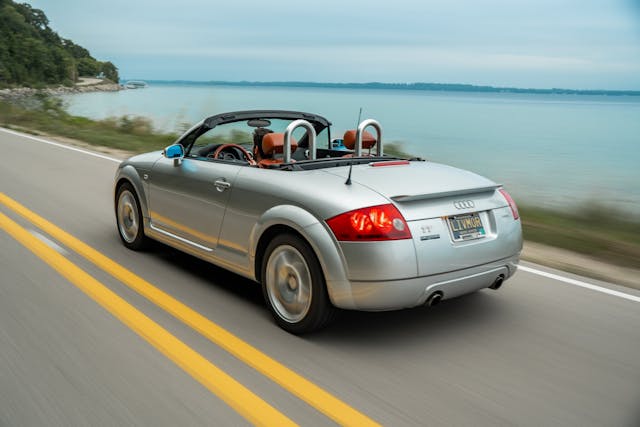

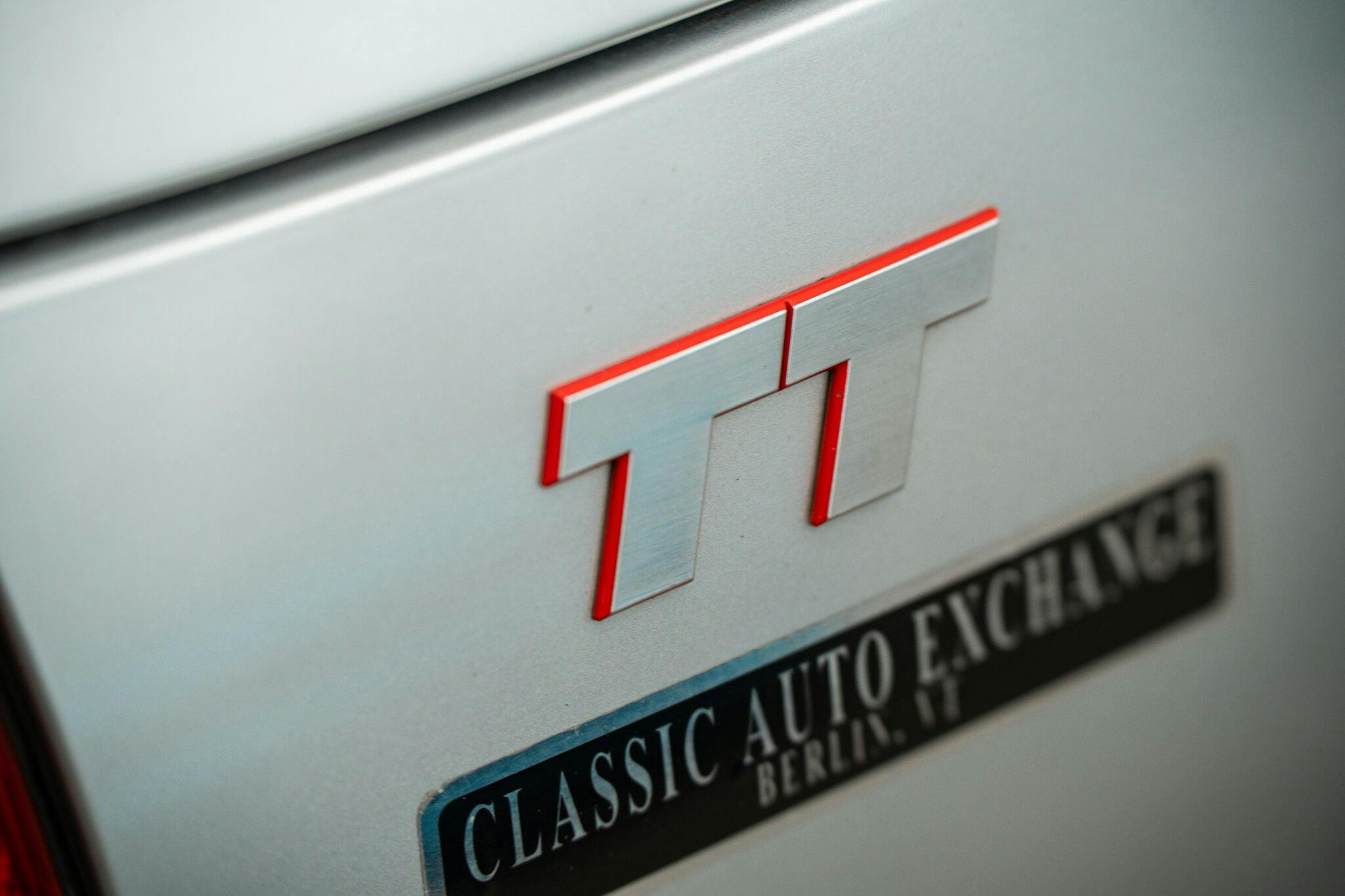

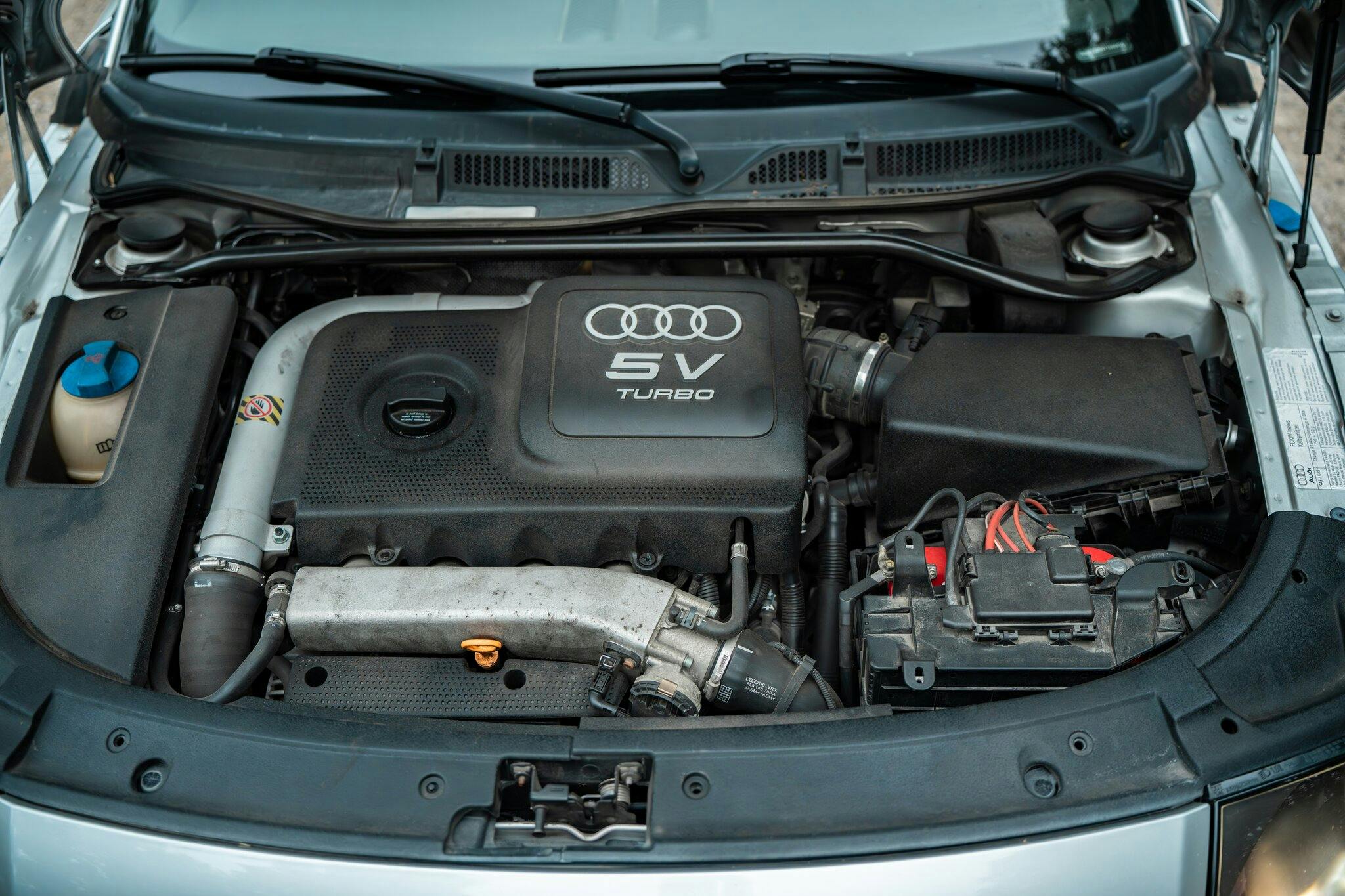

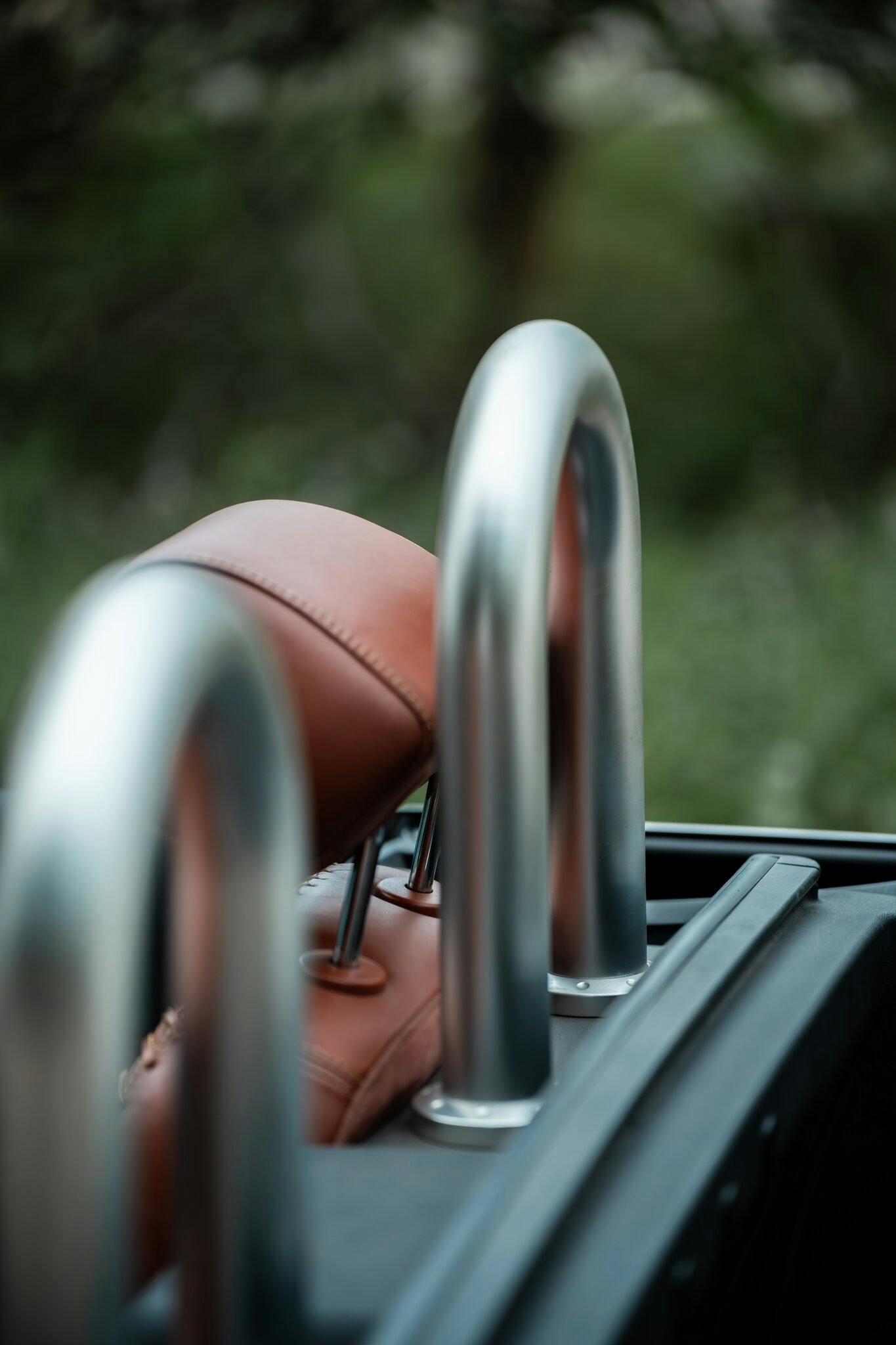
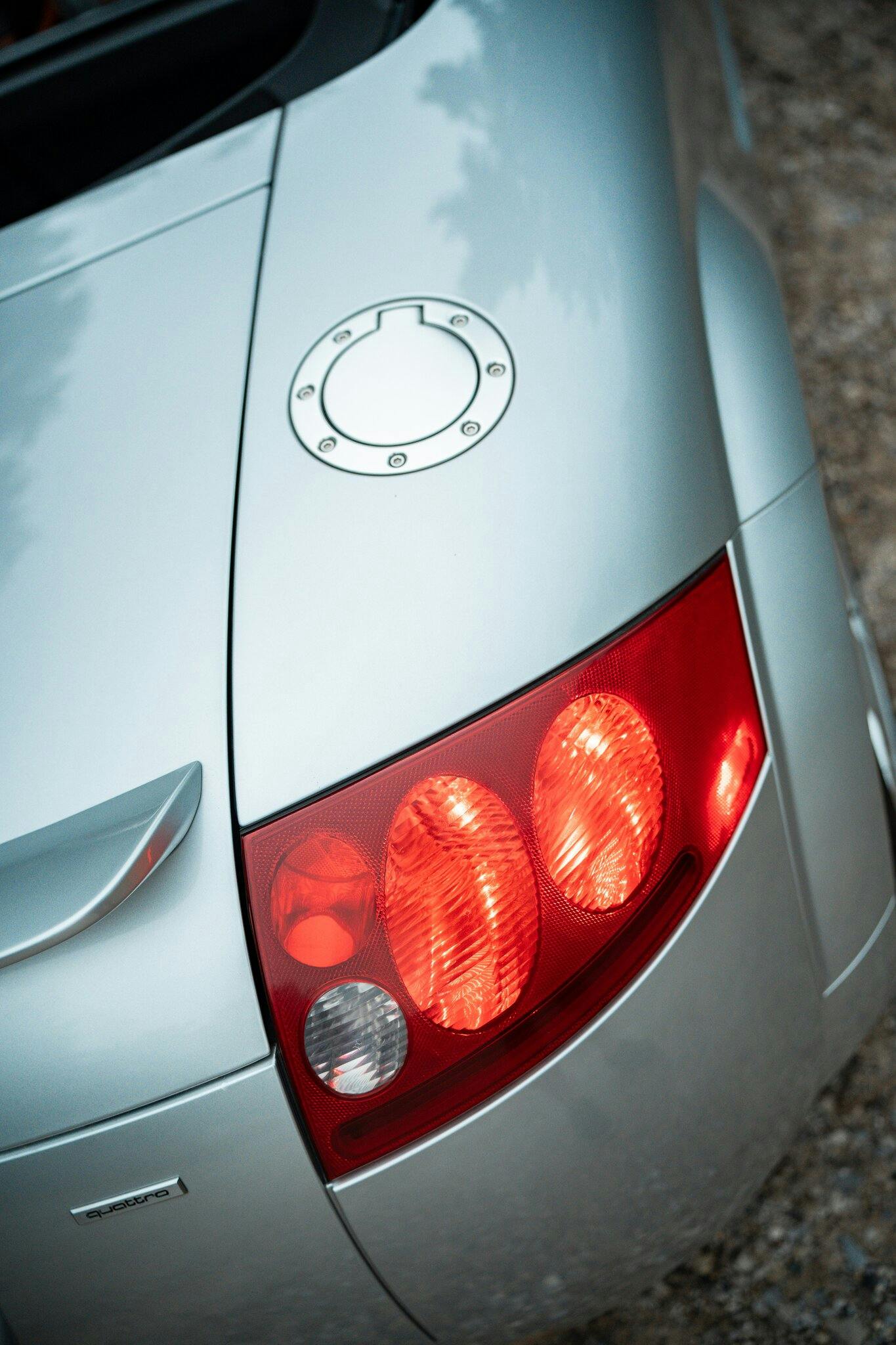
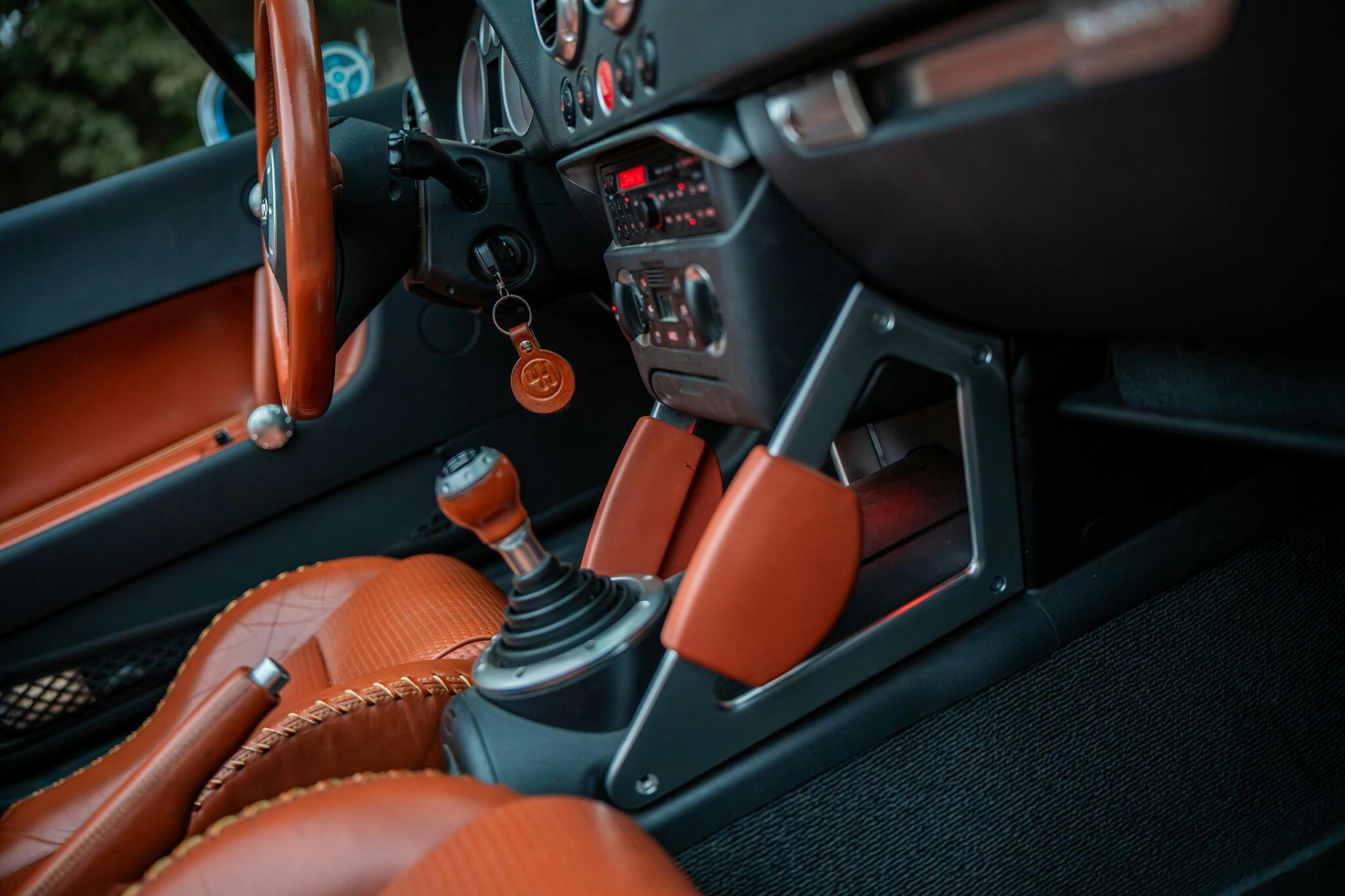
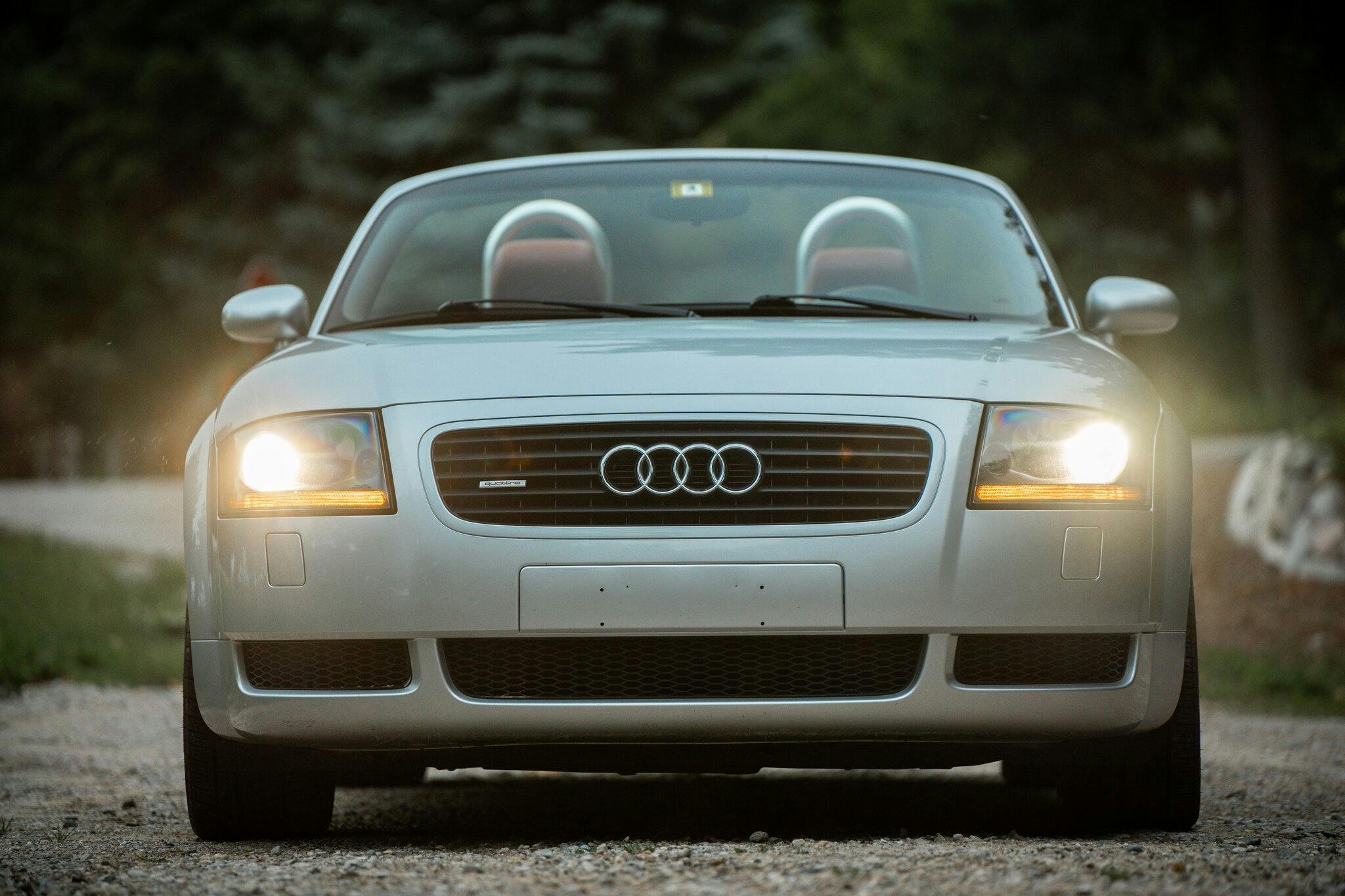


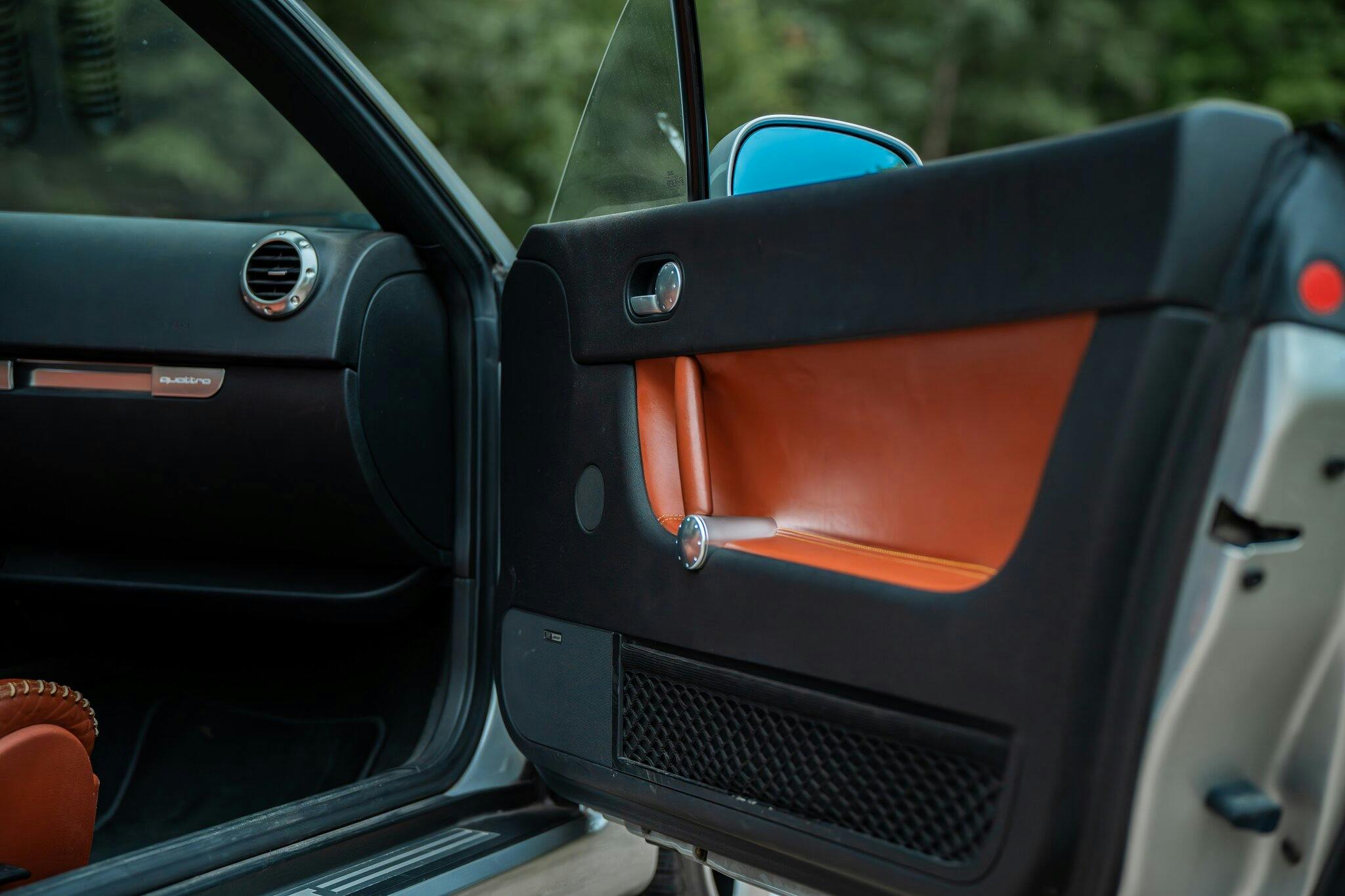
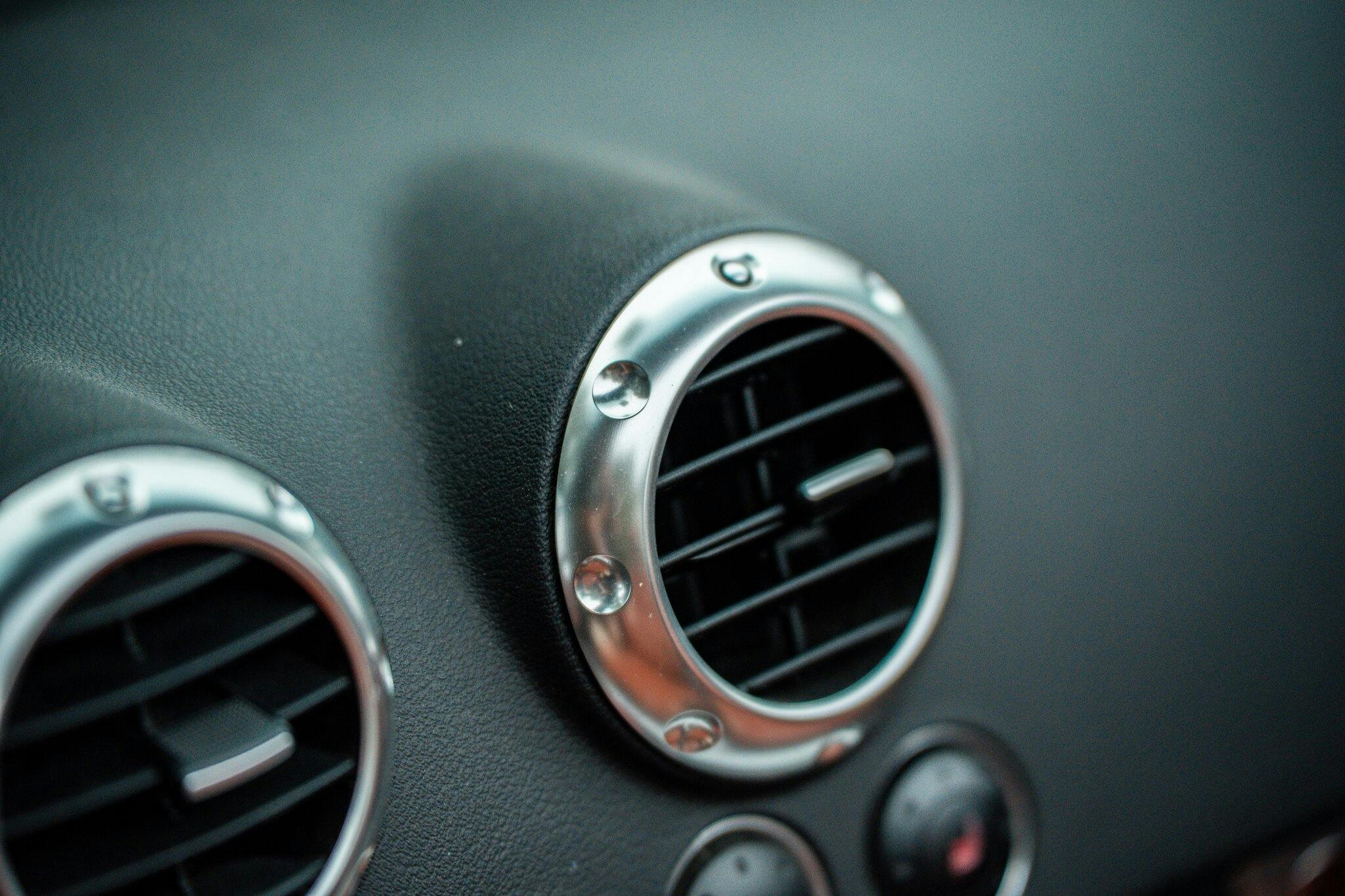
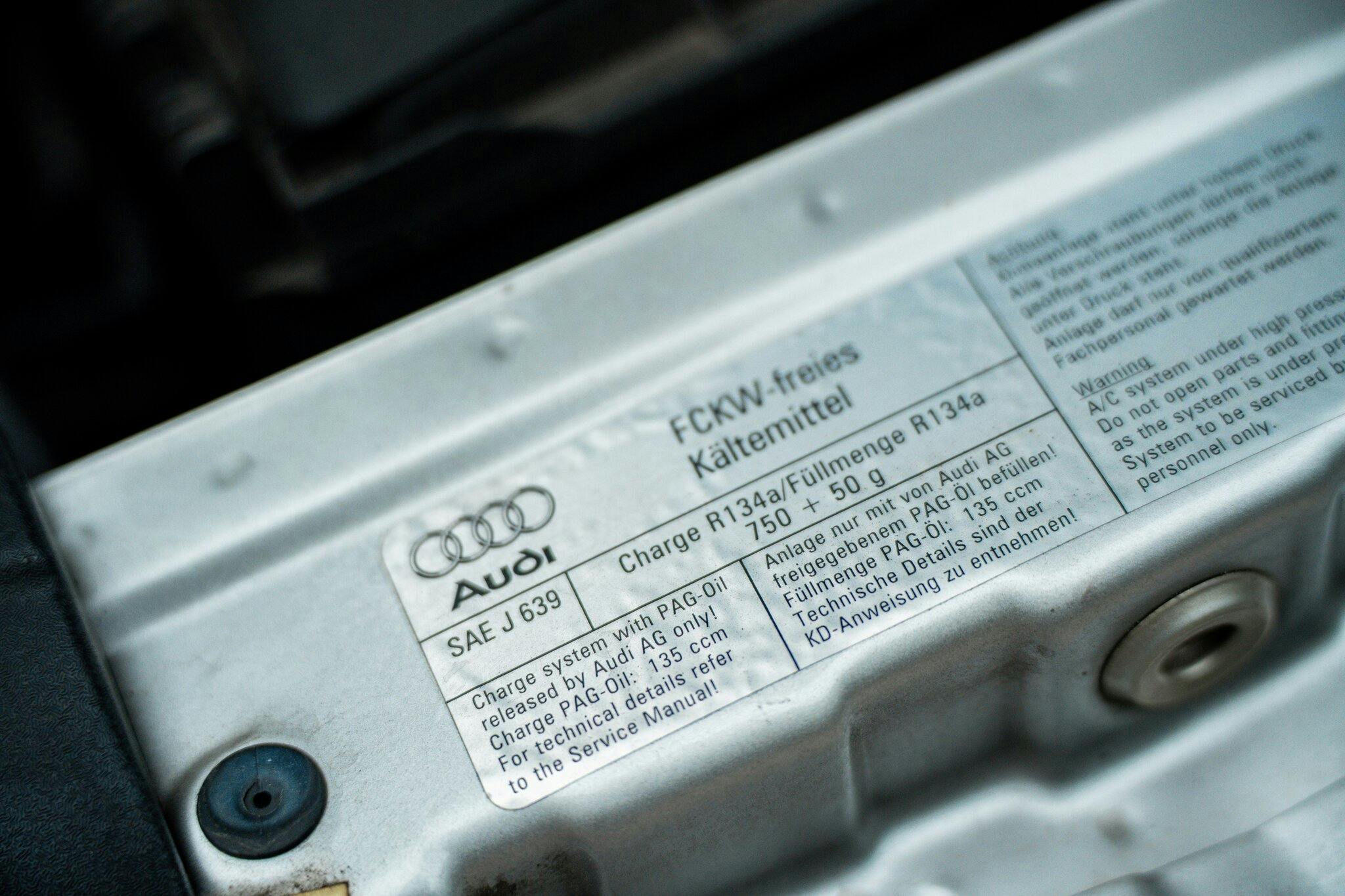

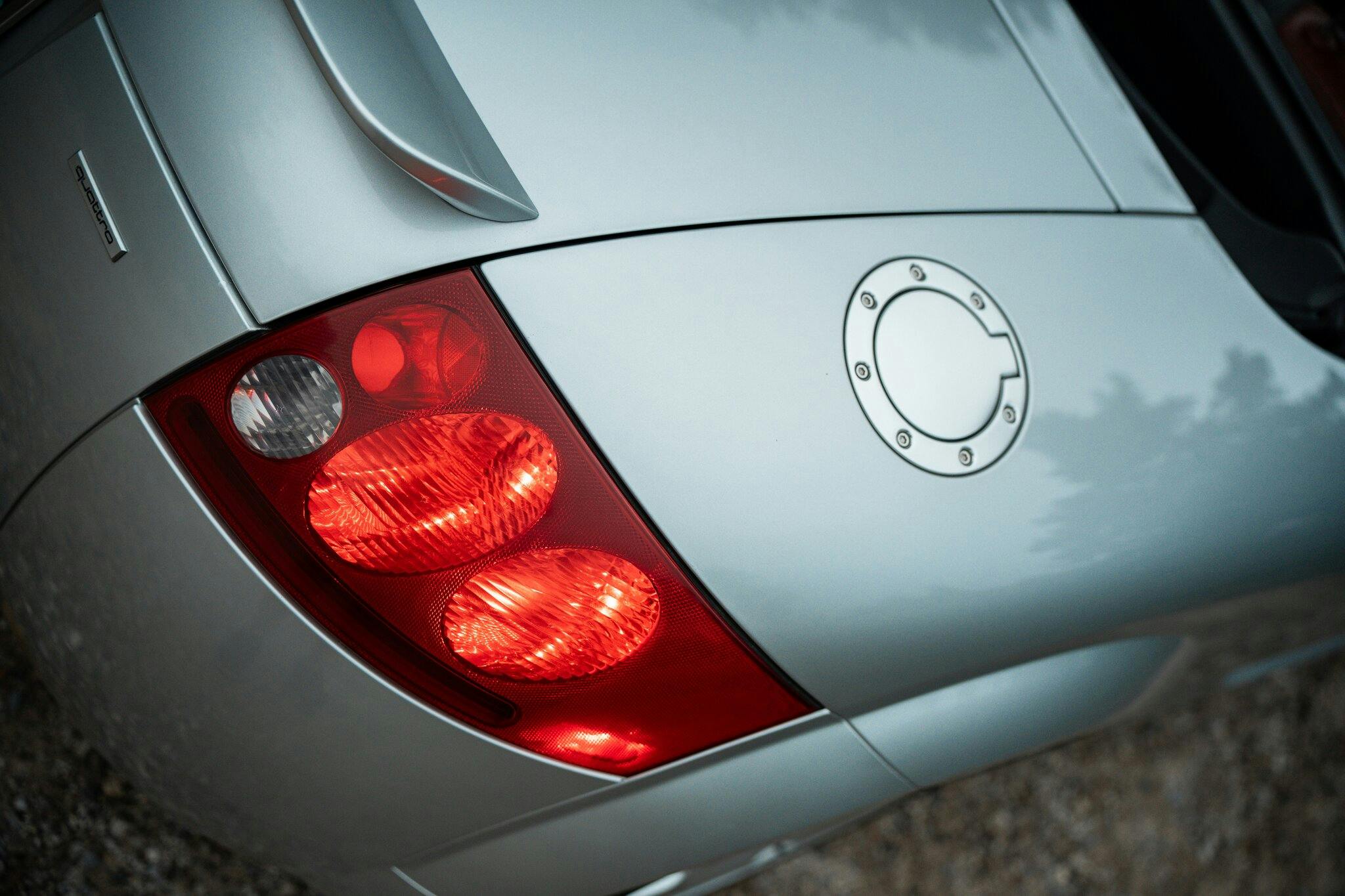
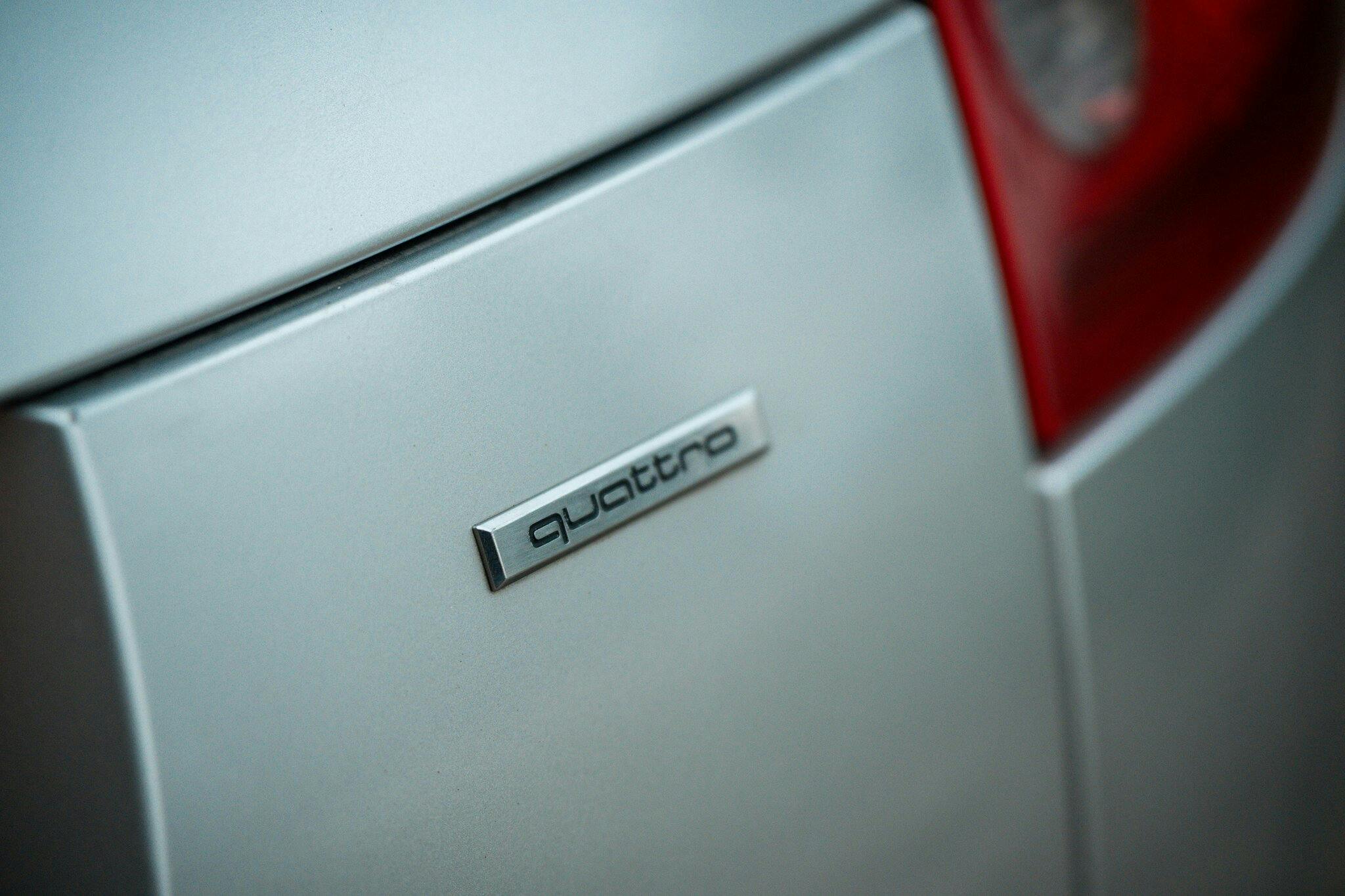

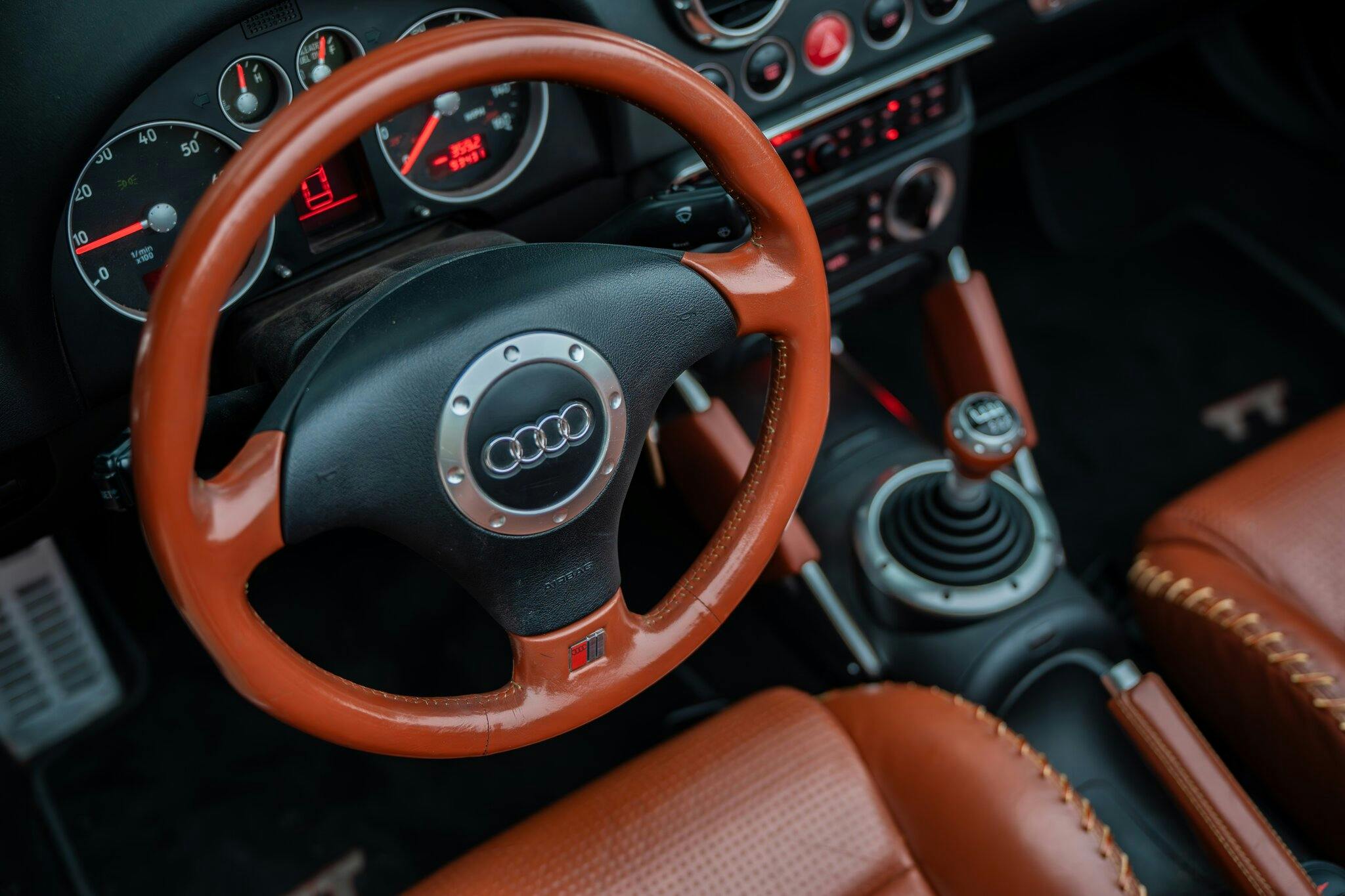
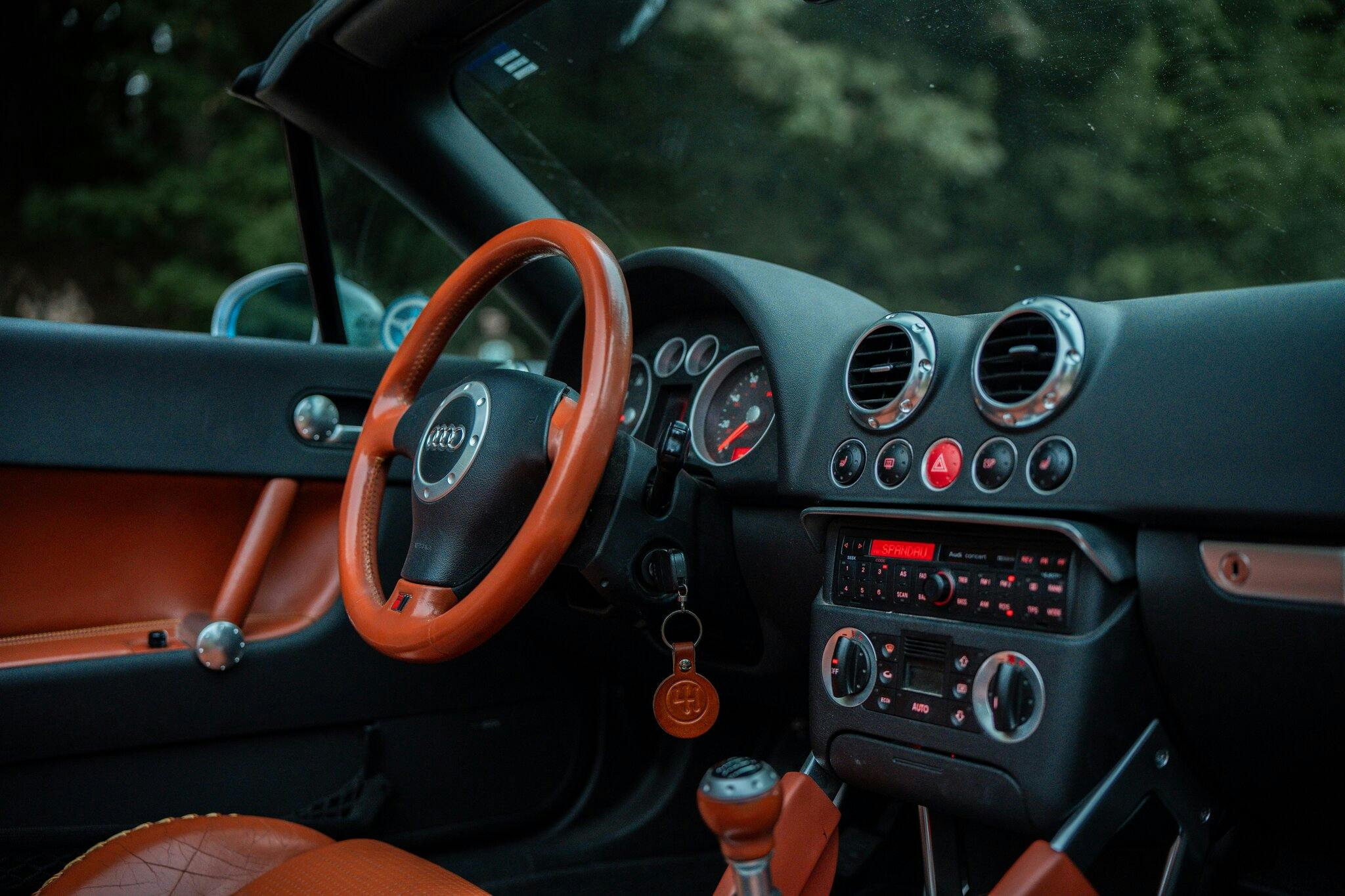
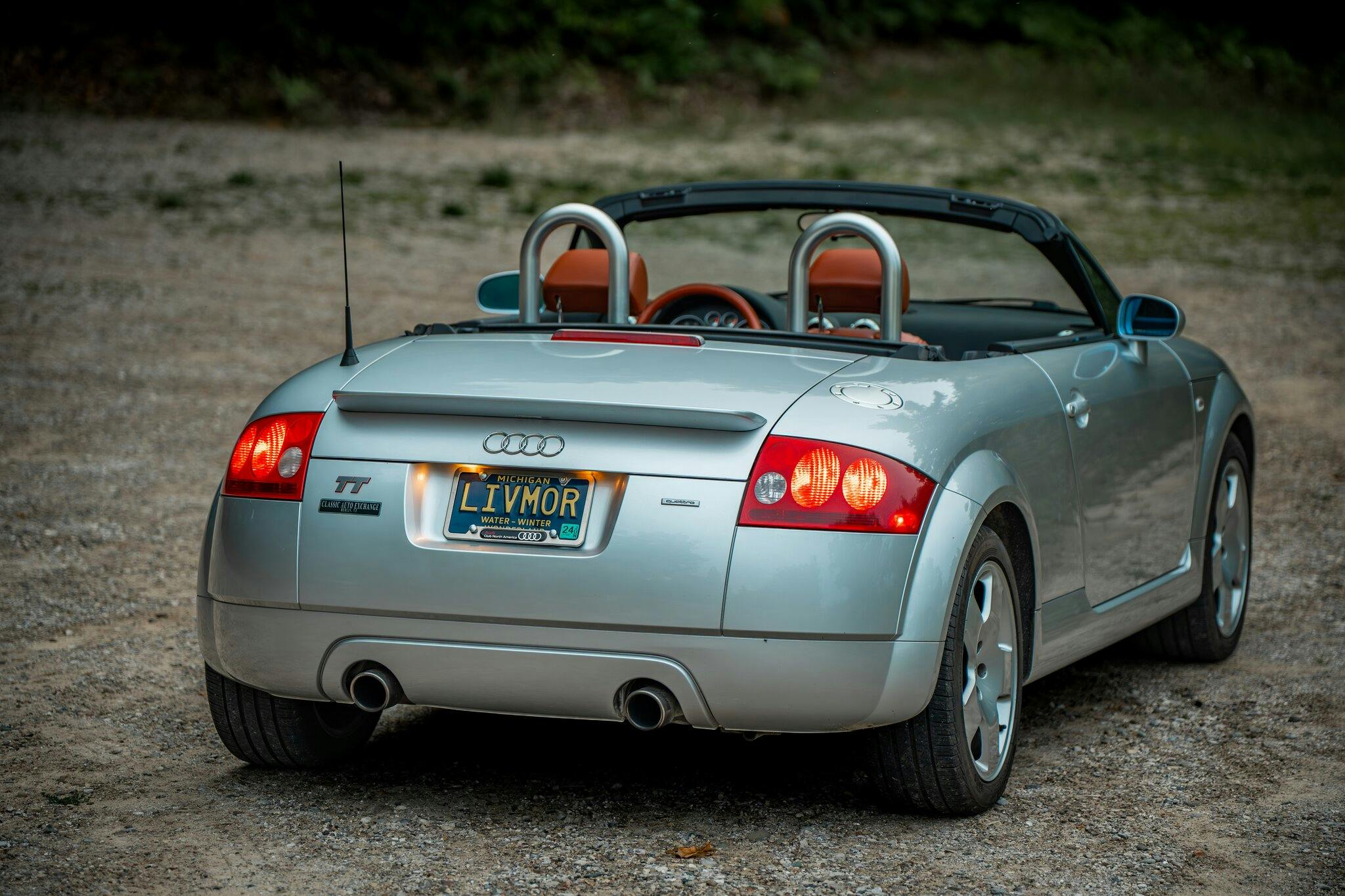
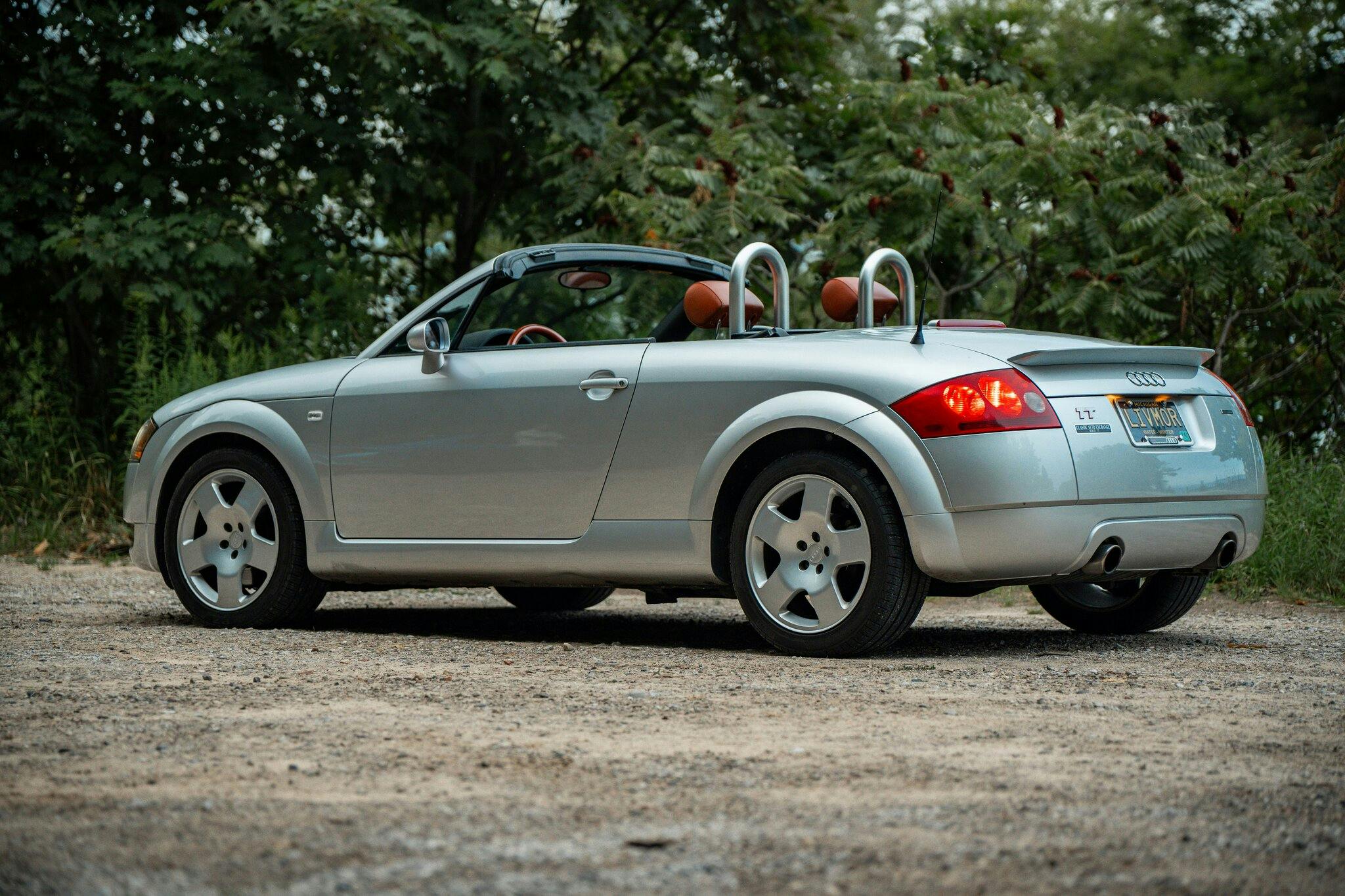
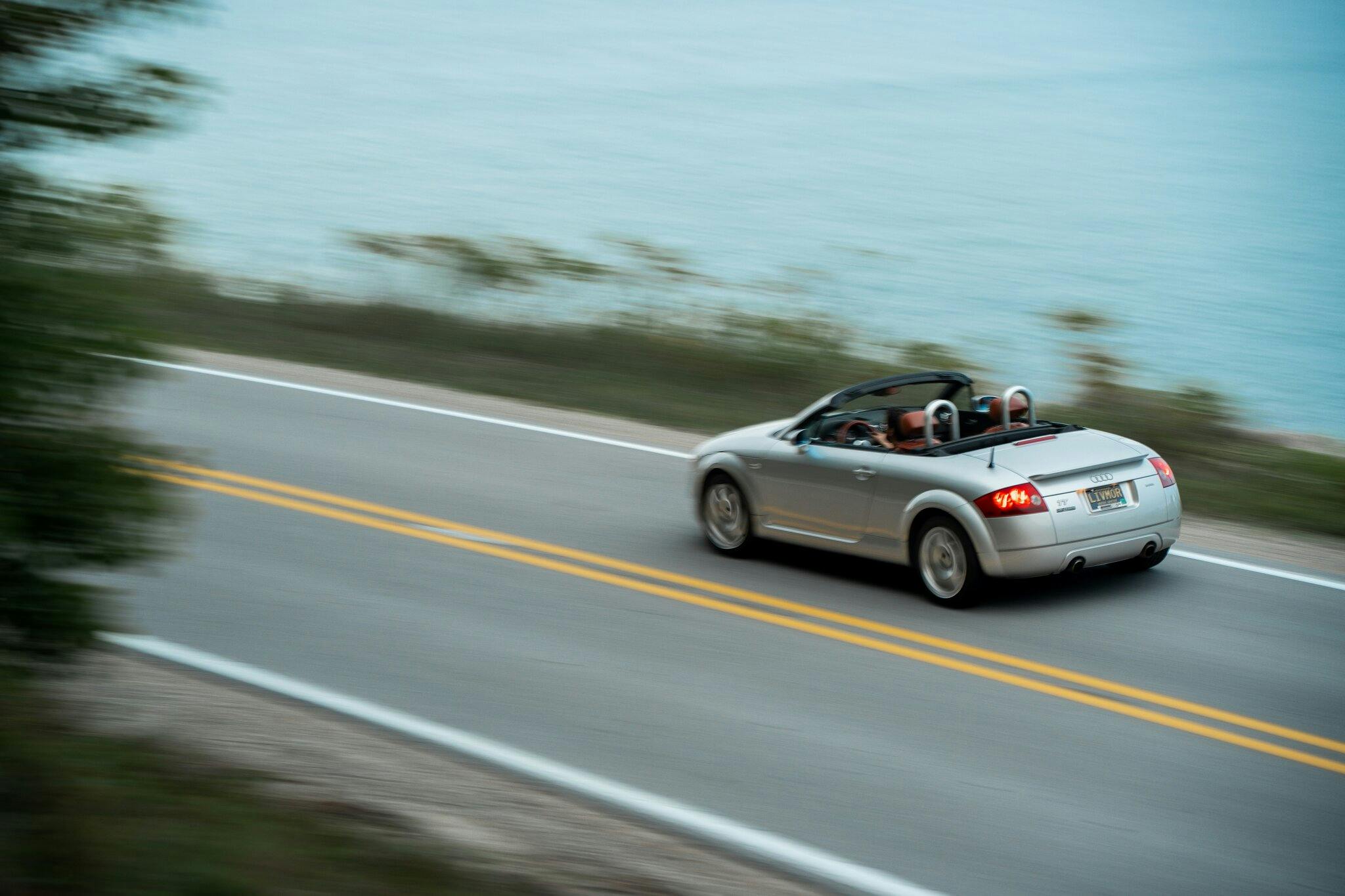
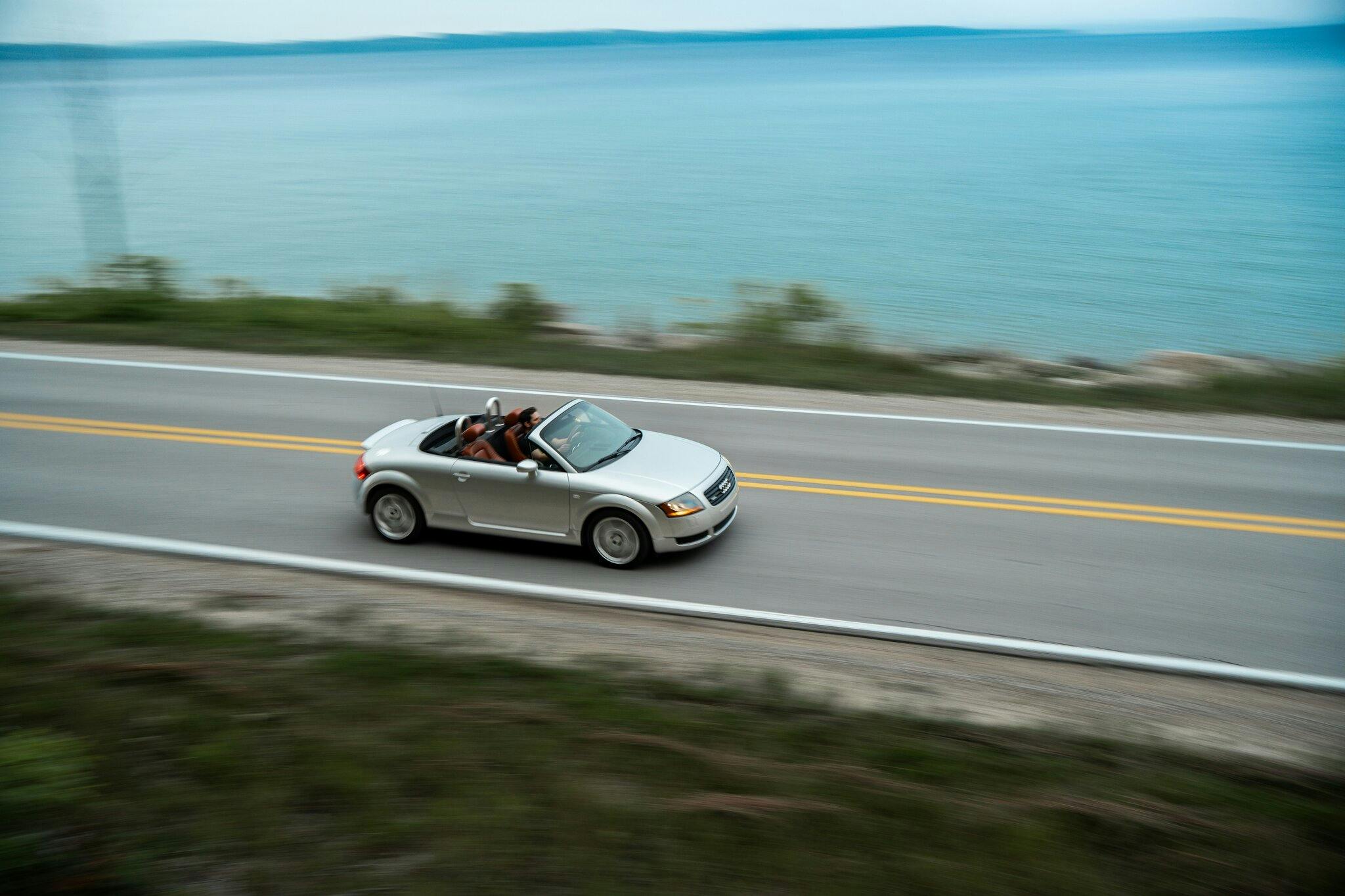

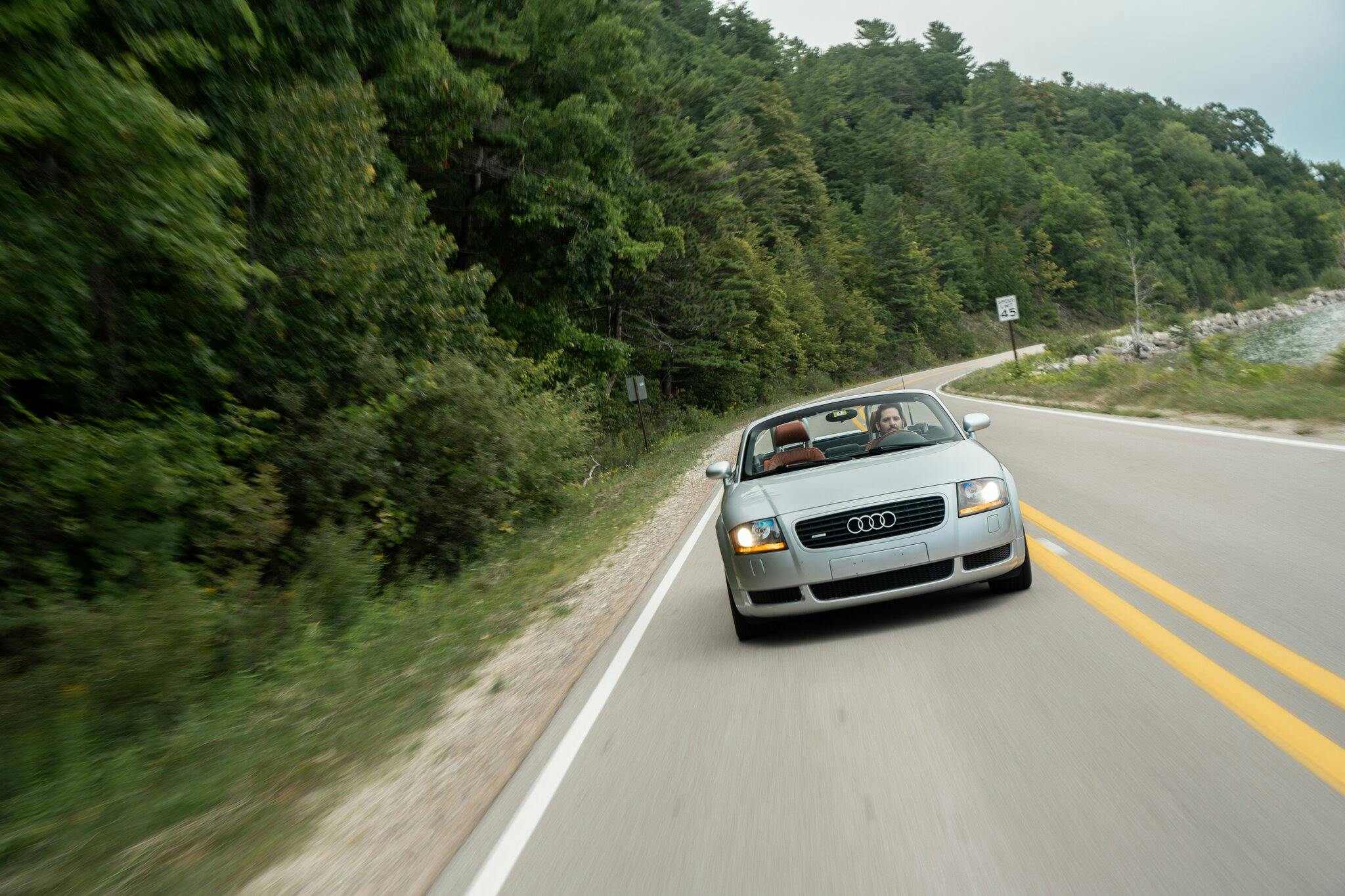
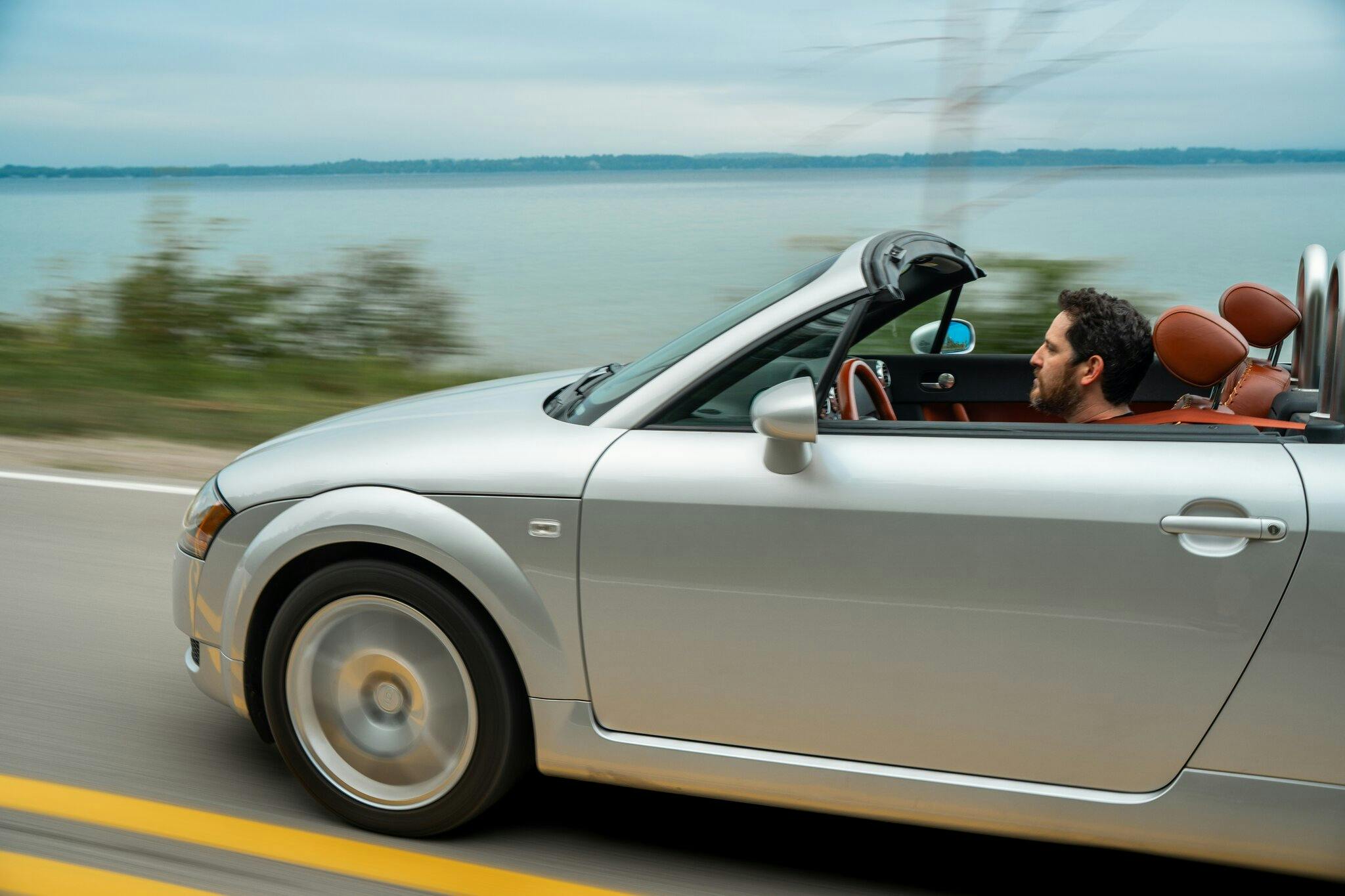
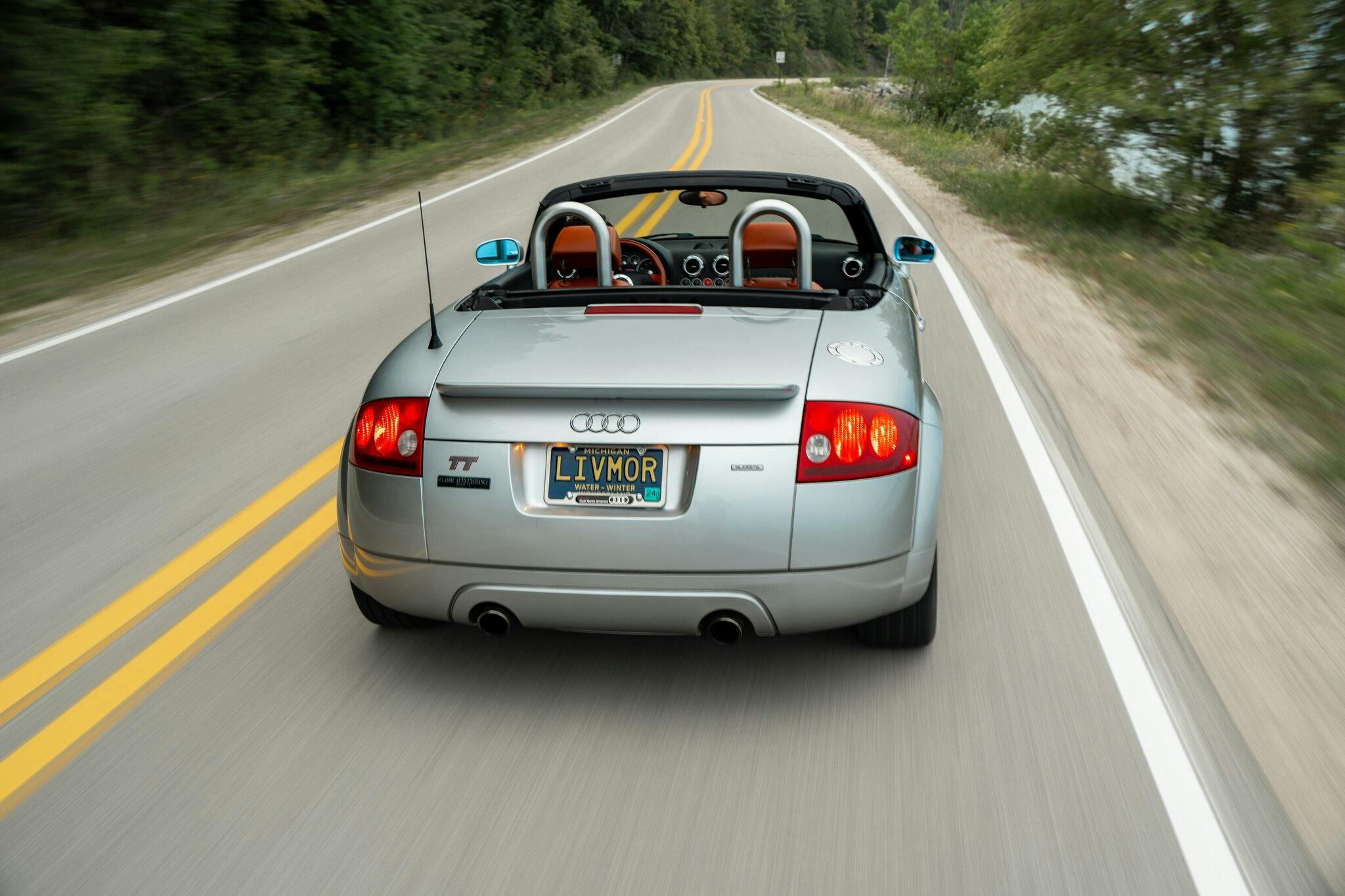
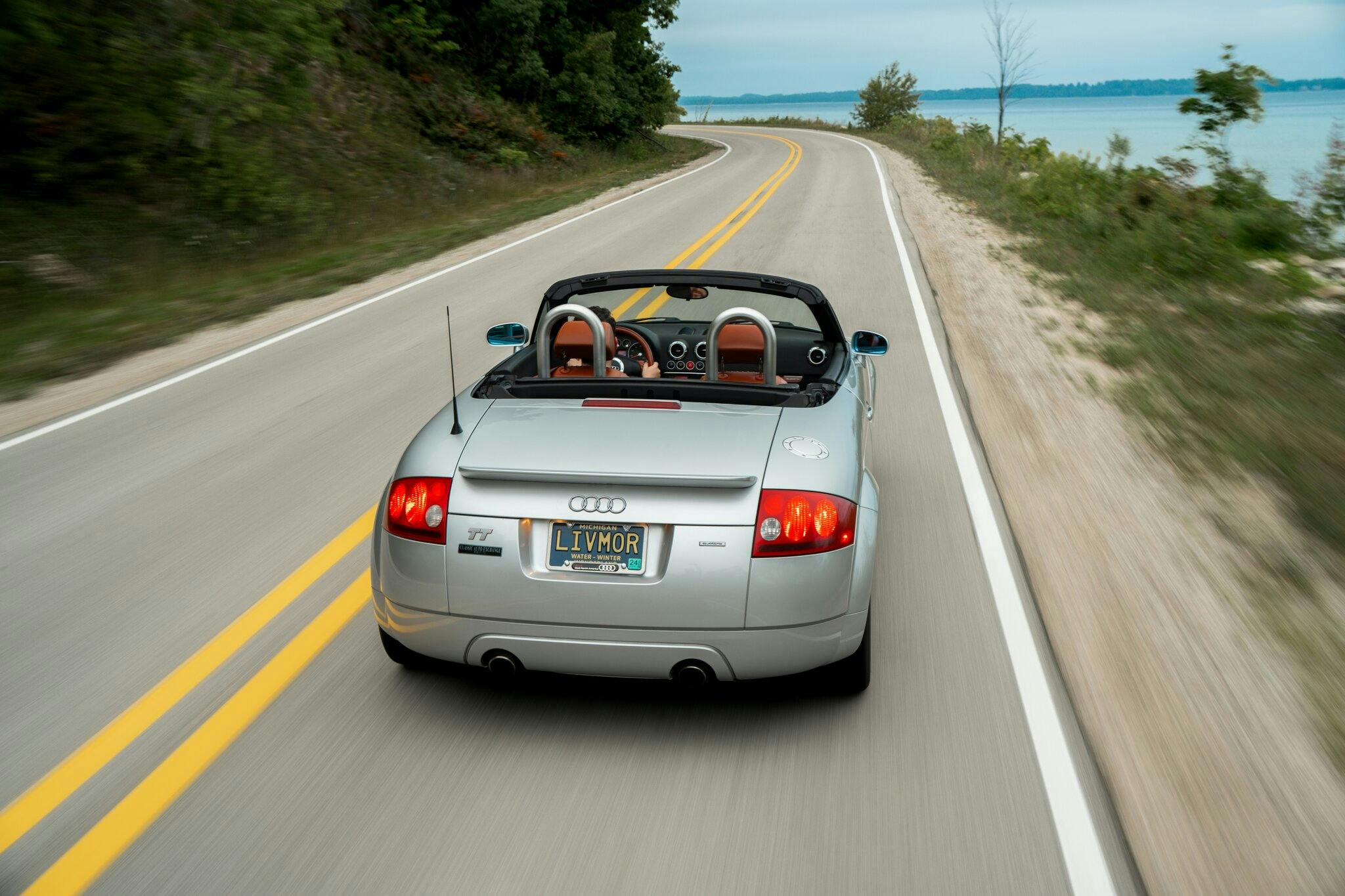
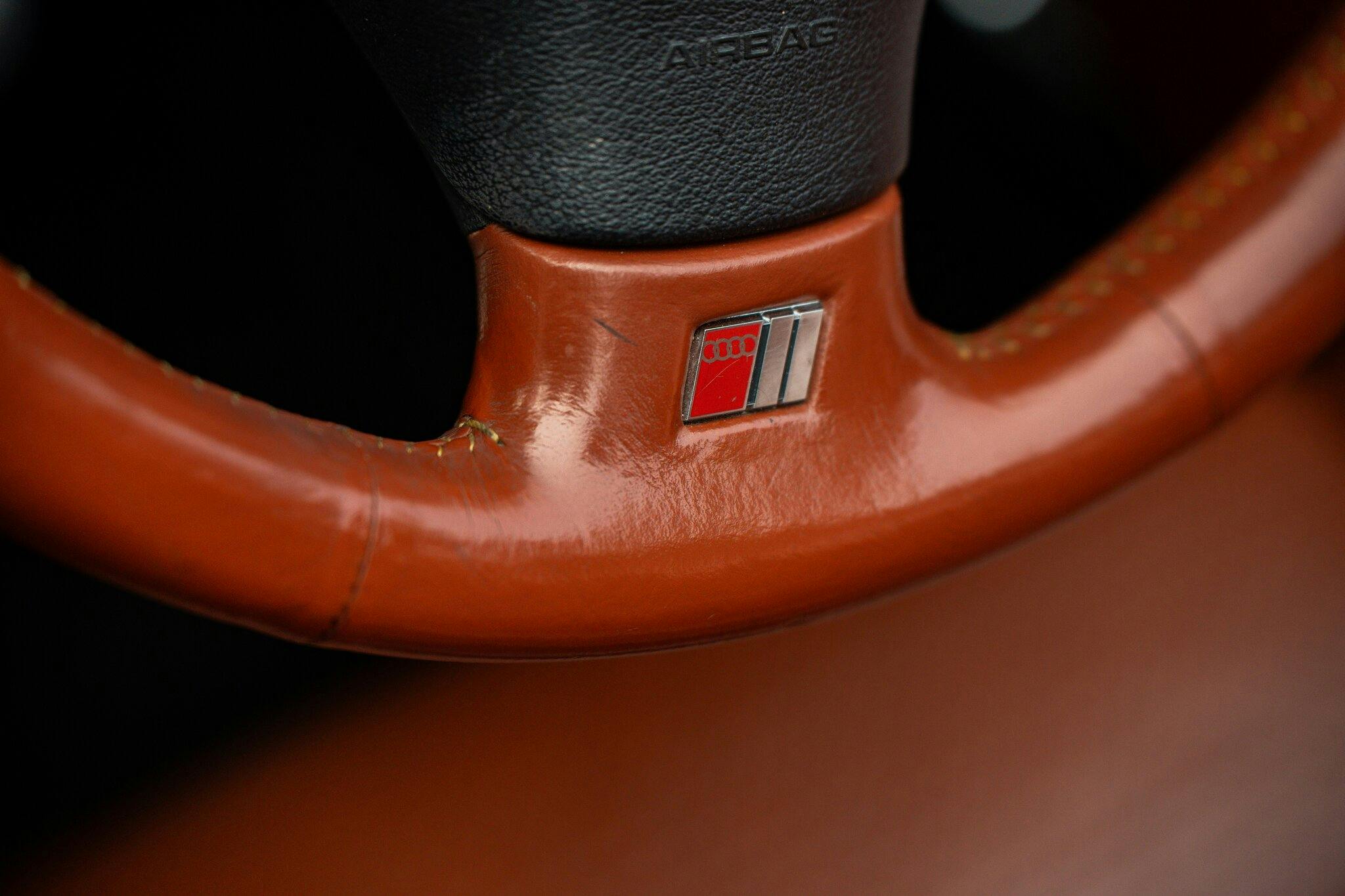

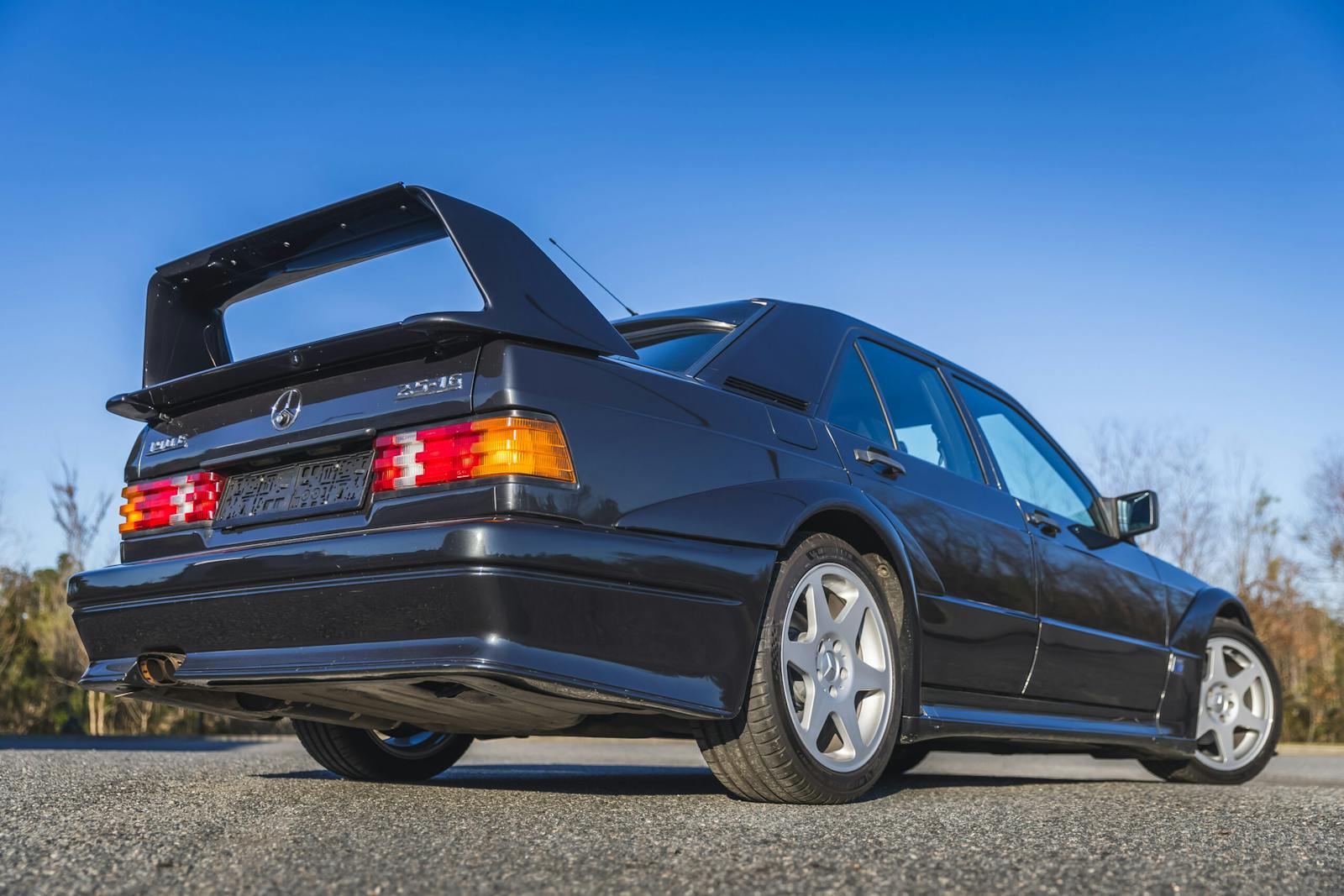
My lawyer had that same car new with the baseball glove seats back then. I paid for a substantial amount of that car and only rode in it to the courthouse once! A honcho labor lawyer, by the way. Fun with unions…
I have that car’s brother, same except mine is Nimbus Grey (Twin to the Maisto model.) Love it!
I had a 2005 Navarro Blue 3.2l roadster with DSG and it was built like a bank vault. It was a great car for traveling twisty back roads in the Pacific Northwest. I really miss it along with all the others that got away.
I liked them with a 6 cylinder motor.
Audi was on a roll with interiors that shamed its competition. This interior looks great today. A little “mid-cycle refresh” on the front grille and this car could pass for a 2023. For those who want one, now is the time, as they will never be cheaper or as easy to acquire a good example. Do yourself a favor and try hard to get the baseball glove interior.
My commentary on the outdated notion of “generation demographics” has been stated here a few times. I really wish Hagerty would review modern research into that 1930s developed theory…
Moving on from the above comment… the graphics showing the demographic split pretty much always show the youngest and oldest group of people around 5%. The 30-70 year old brackets then live in a range of 20-35% each for just about every vehicle this information is presented for.
Now in this case… our 55-70ish year-olds like the TT a bit more than that usual data picture.
I suggest it has nothing to do with belonging to a “cohesive social group raised in the same conditions” and has a lot more to do with being at the top of the income curve when these cars were new and cool, and being able to afford them all along. “Impressively affordable” is relative to your income bracket after all (and the cost of parts/repairs is just as important as purchase price).
20 years from now, what is the small sporty car that 55-70 year-olds are into? We already know “boomers” will be far less into everything because of attrition from the hobby. Hagerty might even have the data to tell us what 55-70 year-olds were into 10 and 20 years ago. 55-70 is “early retirement era” in life stages (and 18-30 is early career dominated, 30-40 family dominated, etc.). Comparing groups with that lens would be far more informative over time?
Love my 2001 TT Roadster, I bought to to replace the Mazda Miata I sold… Which I didn’t fit into. Being 6-2 I so wanted to fit. The TT is small, but not uncomfortable for those of us that are a tad on the taller side. It is much more refined that the Miata and not really in the same class, it feels heavier, and maybe not as light and nimble but dare I say more stable. IE: Don’t feel like your going to be blown off the road by the next Semi that passes. It is a GREAT car for the money.
Seems like only people i knew who had these were women and gay men. The baseball glove interior was really noice